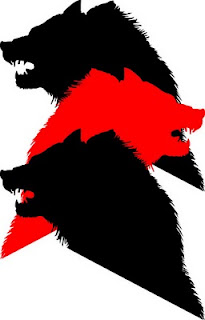
Friday 10 December 2010
Touched

Thursday 9 December 2010
Wallpaper

Tuesday 7 December 2010
Cana
The Charles Gershkovich Project
Tuesday 30 November 2010
Morrissey foretelling the death of Diana...
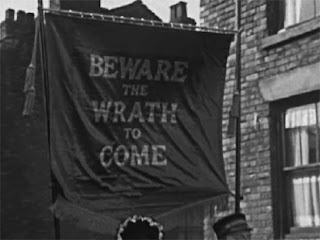 When Listening to The Smiths, Lady Diana is not my first thought but it seemed to dominate all of Lars Laumann's. Laumann has three video pieces in the Open Eye Gallery but only one of them held my attention, 'Morrissey foretelling the death of Diana'. It's a intricately spun web of six degrees of separation, linking The Smith's wordsmith and singer to the foretelling of Princes Diana's death in 1997. Through an extensive montage of found footage, video clips and sounds bite’s the deconstruction of song's on the 'The Queen Is Dead" album unfolds before you. He believes that cryptic clues lye in the lyrics, record covers and music videos. "I want to catch something that I might be ashamed off" is a lyric from the song "Frankly Mr. Shankly" which he says explains Diana's secret love with Mohamed Al-Fayed. Since hearing all these connections I've listen to The Smiths seminal album and If you want to make links then links can be made but I don't feel that because you can do this it justifies these theories of his. Allegedly the song's true meaning is about the Rough Trade boss Geoff Travis' feeling of equality with Morrissey and his poetic ability and his ability to be the voice of a generation. "I feel more fulfilled making Christmas cards with the mentally ill" is another great line within the song and can easily be linked with Diana and her many charitable ventures.
When Listening to The Smiths, Lady Diana is not my first thought but it seemed to dominate all of Lars Laumann's. Laumann has three video pieces in the Open Eye Gallery but only one of them held my attention, 'Morrissey foretelling the death of Diana'. It's a intricately spun web of six degrees of separation, linking The Smith's wordsmith and singer to the foretelling of Princes Diana's death in 1997. Through an extensive montage of found footage, video clips and sounds bite’s the deconstruction of song's on the 'The Queen Is Dead" album unfolds before you. He believes that cryptic clues lye in the lyrics, record covers and music videos. "I want to catch something that I might be ashamed off" is a lyric from the song "Frankly Mr. Shankly" which he says explains Diana's secret love with Mohamed Al-Fayed. Since hearing all these connections I've listen to The Smiths seminal album and If you want to make links then links can be made but I don't feel that because you can do this it justifies these theories of his. Allegedly the song's true meaning is about the Rough Trade boss Geoff Travis' feeling of equality with Morrissey and his poetic ability and his ability to be the voice of a generation. "I feel more fulfilled making Christmas cards with the mentally ill" is another great line within the song and can easily be linked with Diana and her many charitable ventures.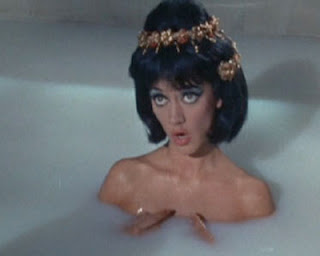
He has tried to rethink story structures, mixing narratives with images to create new and challenging narratives. Video collages, used material, found images, and narrative structure all play an important part in my project at the moment but he's taken it in a very different direction to me. It's a more intense exercise in Detourement but it's also an exploration into the cosmic and the impossible. If Laumann is taking this entire concept seriously and that he truly believes that the singer of a popular indie group from the 1980's can prophesied the death of a monarchical figure then I'm overwhelmed by his delusions. On the other hand if it's an extremely well thought out and structured joke then it's slightly better but ultimately feels like a joke that has fallen flat. His big mouth shouldn't strike again as it doesn't get him anywhere particularly interesting or funny.
Three short works in time
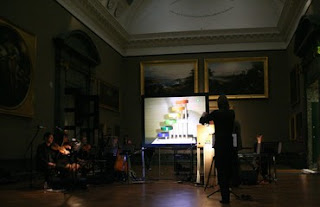 Three short works in time is a series of performance pieces by English Artist Andy Holden who has created in collaboration a performance piece that investigates the relationship between sculptural objects and sound. The work incorporates a 16mm film, a live camera feed, spoken word and a string quartet performing music by 'The Grubby Mitts (Holden's band) and Johnny Parry. I watched these pieces at The Victoria Gallery and Museum where the sweeping strings and the atmosphere of the surrounding walls worked perfectly in partnership. It was an interesting way to both tackle sculpture and sound, this pairing is something that I haven't come across often but Holden is a unique Artist who can use many different avenues of his creative mind to join together to create interesting and diverse junctions.
Three short works in time is a series of performance pieces by English Artist Andy Holden who has created in collaboration a performance piece that investigates the relationship between sculptural objects and sound. The work incorporates a 16mm film, a live camera feed, spoken word and a string quartet performing music by 'The Grubby Mitts (Holden's band) and Johnny Parry. I watched these pieces at The Victoria Gallery and Museum where the sweeping strings and the atmosphere of the surrounding walls worked perfectly in partnership. It was an interesting way to both tackle sculpture and sound, this pairing is something that I haven't come across often but Holden is a unique Artist who can use many different avenues of his creative mind to join together to create interesting and diverse junctions.
One of the pieces had a small child's play toy which was made of differently coloured columns which had a marble drop from layer to layer. This was fed live and projected onto the wall behind the performance; it was also amplified so there was a continuous circling and gentle dropping sound throughout the track. That piece was particularly hard to separate the sculpture from the sound but I felt like it worked really well and was something me and Andy had spoken about last year when I had a one to one tutorial. I was doing sound and light projections which were more of a type of sound and light sculpture so I found his input very valid.
 The sounds which backed up the visuals maybe for me were at points weaker or became stale due to the sounds of violins and cello can grate on me over time. I feel that the overall ideas, sculpture's and spoken words brought it through to a great set of pieces and their entirety was something that I found really interesting and rich.
The sounds which backed up the visuals maybe for me were at points weaker or became stale due to the sounds of violins and cello can grate on me over time. I feel that the overall ideas, sculpture's and spoken words brought it through to a great set of pieces and their entirety was something that I found really interesting and rich.
Camera Lucida
 In a recent talk with artist Andy Holden he turned me onto the book 'Camera Lucida' by Roland Barthes. This turned out to be a perfect recommendation on his part as not only does it inform my work but it also informs my essay. It's given a lot of my stray thoughts and feelings about photography a gravity point and beginning. It's helped me to understand my relationship with found images which has become a recurring theme throughout my work recently.
In a recent talk with artist Andy Holden he turned me onto the book 'Camera Lucida' by Roland Barthes. This turned out to be a perfect recommendation on his part as not only does it inform my work but it also informs my essay. It's given a lot of my stray thoughts and feelings about photography a gravity point and beginning. It's helped me to understand my relationship with found images which has become a recurring theme throughout my work recently.The book examines the themes of presence and absence, the relationship between photography and theatre, history and death; these 'reflections on photography' begin as an investigation into the nature of photographs. Then as Barthes contemplates a photograph of his mother as a child, the book becomes an exposition of his own mind.

Thursday 18 November 2010
Sunday 7 November 2010
Ndize

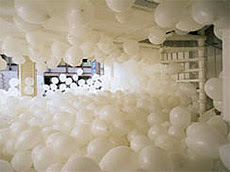
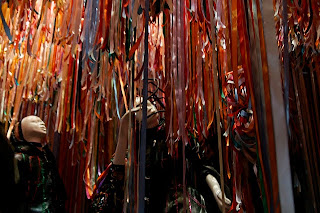
Fact

 The first piece from the Fact Biennial I saw was darkened room with a video playing against the back wall. It was almost like a video severance tape from a military plane. It was in heat sensing colours such as intense reds, oranges and yellows, it had information bars on the vertical and horizontal axis' with details of height and depth. Within the room itself there were people sat on the bench at the back, I was left standing at the side peering in. This may have been a reason for my unwillingness to hang around, that mixed with my first impressions. It was the type of video that I have seen many times in the past and is something that turns me off with regards to video art. It's the way in which the artist chooses to tackle his idea which feels cold of any human touch and uninterested visual subject matter. An interesting reflection on this piece is that I made a video piece towards the end of the first year which had somewhat similar imagery and colours. It was a piece of film I had taken whilst on a train journey. I had manipulated the colours so they morphed and bleed into each other over time. The abstract premise of this idea was to try to recreate the colours I see within my eyelids on these journeys to and from home. In hindsight I feel I tackled this warm, human sensation in a detached way and maybe the idea could have best been tackled differently.
The first piece from the Fact Biennial I saw was darkened room with a video playing against the back wall. It was almost like a video severance tape from a military plane. It was in heat sensing colours such as intense reds, oranges and yellows, it had information bars on the vertical and horizontal axis' with details of height and depth. Within the room itself there were people sat on the bench at the back, I was left standing at the side peering in. This may have been a reason for my unwillingness to hang around, that mixed with my first impressions. It was the type of video that I have seen many times in the past and is something that turns me off with regards to video art. It's the way in which the artist chooses to tackle his idea which feels cold of any human touch and uninterested visual subject matter. An interesting reflection on this piece is that I made a video piece towards the end of the first year which had somewhat similar imagery and colours. It was a piece of film I had taken whilst on a train journey. I had manipulated the colours so they morphed and bleed into each other over time. The abstract premise of this idea was to try to recreate the colours I see within my eyelids on these journeys to and from home. In hindsight I feel I tackled this warm, human sensation in a detached way and maybe the idea could have best been tackled differently. One of the stand out piece's for me in this biennial, this being my first, was the Tehching Hsieh 'One Year Performance (1980-1981)-(Time Clock Piece)'. The piece involved Hsieh clocking in on the hour every hour for an entire year. I think the reason why I was so struck by it was the shear scale of the idea and the realisation of the project. I've caught myself thinking about it many times since seeing it and it's warranted repeated views by myself and with others. I also found myself telling friends from home about it and showing them on their recent visit to see me. I think the reason for this level of interest is the fact that I know I could never imagine or tackle a project of this scale. I don't have the discipline or the determination to go through such a high level of monotony or routine. The presentation of the idea was something that I was really taken with as well as it all had an order and schedule, which is something I like. I did realise that as I was walking around and inspecting his time keeping skills I was noticing that he had missed a few of his self imposed deadlines. My first thoughts were "Lazy" which then made me laugh as I realised the level of commitment attached to this idea and for him to miss a few clock In's was only human.
TATE

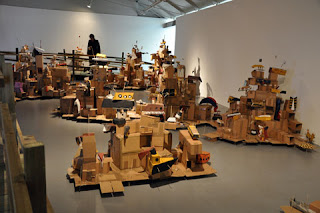

A Foundation.2




A Foundation.1
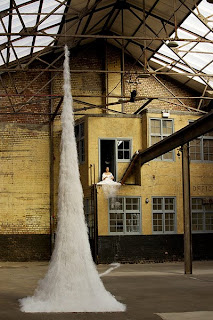

Shooting The Breeze

